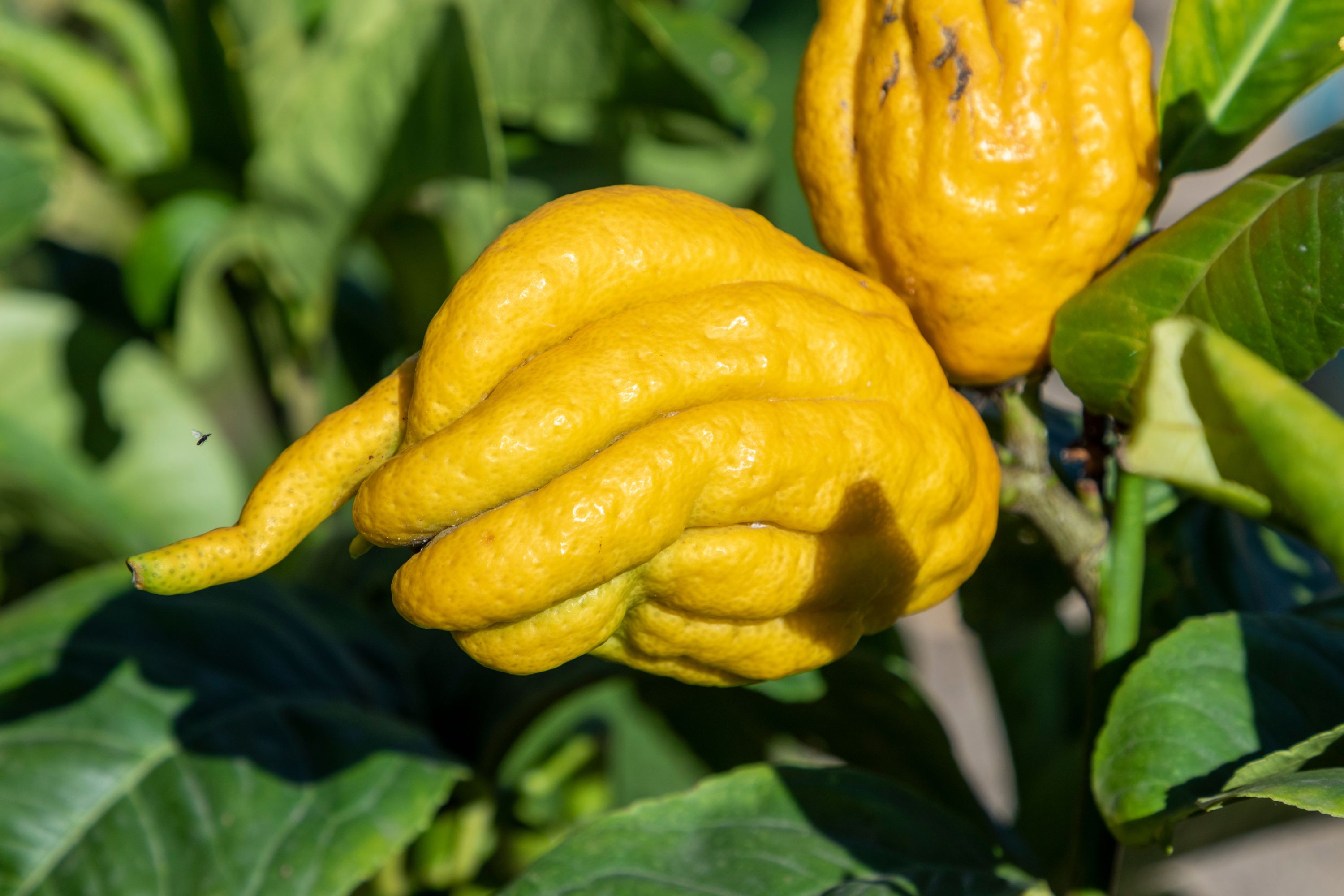Citron
(Citrus medica)

Description
The Citrus medica is a large fragrant citrus fruit with a thick rind. It is one of the original citrus fruits from which all other citrus types developed through natural hybrid speciation or artificial hybridization.Though citron cultivars take on a wide variety of physical forms, they are all closely related genetically. It is used in Asian cuisine, traditional medicines, perfume, and religious rituals and offerings. Hybrids of citrons with other citrus are commercially more prominent, notably lemons and many limes. The citron is an old and original citrus species. There is molecular evidence that most cultivated citrus species arose by hybridization of a small number of ancestral types, including citron, pomelo, mandarin and to a lesser extent, papedas and kumquat. The citron is usually fertilized by self-pollination, which results in their displaying a high degree of genetic homozygosity. It is the male parent of any citrus hybrid rather than a female one. Archaeological evidence for Citrus fruits has been limited, as neither seeds nor pollen are likely to be routinely recovered in archaeology. The citron is thought to have been native to India, in valleys at the foothills of the eastern Himalayas. It is thought that by the 4th century BC, when Theophrastus mentions the "Median apple", the citron was mostly cultivated in the Caspian Sea on its way to the Mediterranean basin, where it was cultivated during the later centuries in different areas as described by Erich Isaac. Many mention the role of Alexander the Great and his armies as they attacked Iran and what is today Pakistan, as being responsible for the spread of the citron westward, reaching the European countries such as Greece and Italy.
Taxonomic tree:







